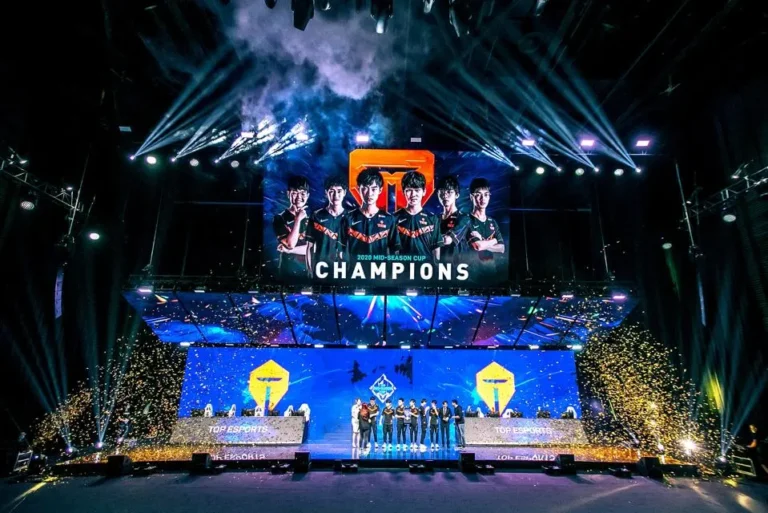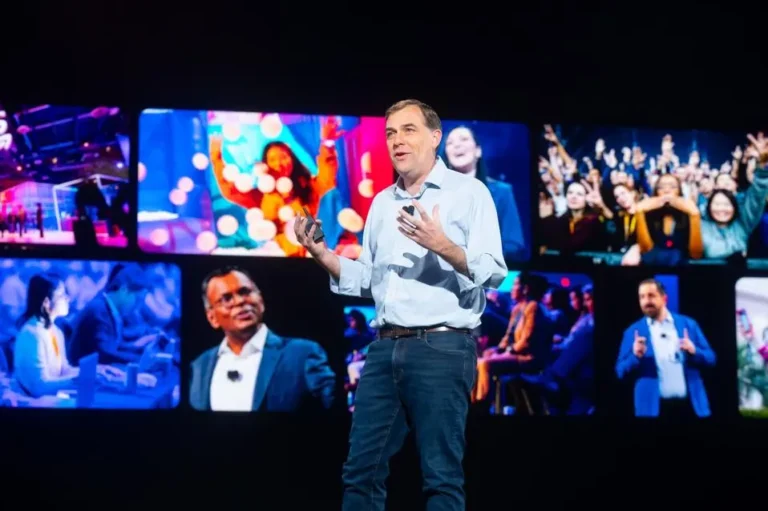Dean DeBiase is a best-selling author and Forbes Contributor reporting on how global leaders and CEOs are rebooting everything from growth, innovation, and technology to talent, culture, competitiveness, and governance across industries and societies.

Rebooting Hybrid-Remote Collaboration And Innovation

By Dean DeBiase
December 17th, 2022
If you were asked to sum up everything workplaces have faced over the past few years, what words come to mind? Personally, I’d say “recalibration” encapsulates the massive shifts tech. companies were forced into like hybrid and remote work—as they both expanded during the global pandemic and began cutting back on people and operating costs going into 2023.
From startups to long-standing giants of industry, leaders have been rebooting everything from team structures and day-to-day approaches, to overarching corporate strategy and go-to-market resourcing. Amid these massive changes, leaders everywhere have been challenged to navigate their teams through uncertain waters to deliver positive business outcomes without a modern compass to guide them.
It’s been compelling to watch legacy organizations in particular, pursue new directions inspired by the pandemic’s societal impacts—and pivot their resources both up and down. One of America’s first tech companies, HP Inc. (HPQ), has been through many reboots, and provides new examples of a pioneering organization that’s charting the course through the hybrid work transformation. With no shortage of aggressive competitors, like Apple Inc. (APPL) and Dell Technologies Inc. (DELL) and many others, the company is pivoting internal processes, as well as its portfolio of tech products and new ventures, with the goal of shaping the reality of the new hybrid world.
Stephanie Dismore, Managing Director of HP North America, has seen the organization adapt to countless challenges and opportunities over the past 20 years. However, she recently discussed how the hybrid revolution posed an unprecedented opening for her team and others. As she sees it, HP’s subsequent response has been to double down on their core categories—including hybrid work solutions, gaming, peripherals, services and more—which have seen growth in both popularity and necessity in the 2020’s. HP’s ongoing response provides some insightful approaches for leaders of companies big and small navigating pandemic inspired reboots.
Investing in Talent to Unlock Hybrid Innovation
As enabling the best hybrid experience quickly became a top priority for HP, the company realized it first needed to look internally and set new standards for workplace management in order to cement itself as an industry leader in this transition.
Dismore is adamant that people must be the number one focus throughout such periods of unprecedented uncertainty. Therefore, HP has sought to provide the right culture where employees can thrive. “What we’ve learned is that the most important thing that our team wants is flexibility and how we can enable flexibility so we’re a company where people want to work, and we enable the environment to bring your best work,” she says.
It’s a timely area of focus for most organizations, given that Microsoft’s 2022 Work Trends Index reported a whopping 252% increase in weekly time spent in meetings for the average Teams user since 2020. 252 percent—ugh. To offer a reprieve, HP introduced new initiatives including hybrid work subsidies, a Wellness Allowance and “Hiatus from the Hustle” days to provide a break from meeting mania. Dismore says of these benefits: “We want to build this idea of trust and accountability for everyone.”
Emphasis on trust is crucial, as through her personal journey navigating a global hybrid work landscape and the experiences of her employees, Dismore found that workers not only want, but require the flexibility and autonomy to manage their own schedules to achieve new and expanded versions of work/life balance. Honestly—shouldn’t we call it something more appropriate by now? It’s one of the most important factors in recruiting, retaining, and engaging talent today. Per Fortune and Great Places to Work’s research, only half of U.S. employees believe their employer encourages work/life balance—down from 86 percent of employees at companies on the 2022 100 Best Companies to Work For list. It’s clear the prioritization of balance is no longer a “nice to have,” but an imperative for constructing the best possible work environment.
In tandem with these efforts, HP has focused on expanding professional development opportunities. “We’re focused on training our people and really having this idea of a school of talent, where we’re always providing opportunities for growth. Whether that’s training or skill sets, or promotions, or rotations. If that’s your base layer, then we get into innovation,” Dismore tells me.
HP is not alone in these investments, at Kellogg School of Management, where I teach, train and coach executives, we are seeing unprecedented demand in our Executive Education Programs from Global 1000 corporations. It is important to keep in mind, even in uncomfortable downturns, as organizations cut back and focus on digital-transformation, reductions in forces and cost optimization—they must double-down and invest heavily in their next generation of people. According to Tom O’Toole, Associate Dean for Executive Education at Northwestern University’s Kellogg School of Management, “Businesses are investing like never before in learning programs for their organizations and for individuals. The pace of change and new developments facing businesses today, such as artificial intelligence and digital transformation, are requiring even the most progressive organizations and executives to engage in continuous learning. And, many businesses are doing so for the first time.”
Building, Buying and Borrowing Innovation
Investing in innovation is exactly what has kept HP in the game after over 80 years now. As Dismore describes it: “We get really excited about how we can continue to create products and solutions that help people create, help people produce, help people’s work and personal lives be seamless with the use of technology.”
After seeing how effective hybrid and virtual meetings require participants to be able to hear and be heard, see and be seen clearly, whether they are in the room or not, the company decided to invest in providing the right peripherals. According to HP Proprietary Research collected in 2021, 75 percent of people judge others based on audio quality, and 63 percent believe clear audio matters more now than before. If you have ever been on the bad end of a Zoom, Google Meet or Microsoft Teams meeting, you get it.
In this new chapter, the company has looked externally to innovate and expand its toolbox and capabilities to serve these new needs. One of my Kellogg Executive Education sessions explores how to expand global growth and innovation through a Build it, Buy it, or Borrow it strategy—with the latter focusing on co-creation, partnerships through a program called Dancing with Startups. HP has gone to school and really stepped up its game in these growth categories. Their recent acquisition of Poly strongly signals the company’s commitment to doubling-down on enabling effective hybrid work.
“Poly brings incredibly strong talent, differentiated technology, and a complementary go-to-market system that we believe will further strengthen our position in large and growing markets. Together, we will have vast opportunities to innovate for customers and grow our business as we continue building a stronger HP,” said HP CEO Enrique Lores.
The newly combined organization will pave the way for HP to create the hybrid work experiences of the future, while additional acquisitions like Bromium (2019), HyperX (2021), and Teradici (2021) are expanding HP into new areas that will provide further value to customers and partners. Furthermore, HP’s new Workforce Services & Solutions organization will drive more integration across the commercial services, software and security portfolio. Look for more Build/Buy/Borrow innovation from HP as they beef up their assets and offerings in these and other increasingly competitive business and consumer markets—like Zoom Rooms.
CEO’s that reboot their organizations now—with plans that both invest in focused growth sectors, while transforming their fundamental cost and go-to-market structures—will be best positioned in a 2025-2030 growth cycle. Lores gets it, and his “Future Ready Transformation Plan” is a smart reboot move in that direction.
Rebooting Collaborative Innovation
Meanwhile, countless companies are continuing to navigate a complex environment of how employees interact and engage day-to-day, without a true return to office mandate for most organizations. What is often missing, beyond the mothership of talent, is expanding these collaboration networks to better engage customers, partners and other core ecosystem players at all levels.
The initial tech investments workplaces frantically made to kick off hybrid processes were just the start. I believe this reboot cycle will be years in the making, and it’s on tech companies to continuously evaluate how their products, solutions and new ventures can evolve to empower global collaboration and vale creation for their corporate clients.
Like most new growth categories, corporate leaders may want to look to startups and entrepreneurs who are inventing creation, communication and collaboration tools for borrowed inspiration. Programs like Dancing with Startups are a good place to start. These co-creation partnerships have brought thousands of emerging growth companies together with some of the world’s largest corporations—like HP, Whirlpool, Exelon and Logitech—to deliver the next generation of products, services and ventures.
As HP has shown, much inspiration for tech innovation and business expansion will come from the day-to-day realities of enabling hybrid workforces and partner networks. It’s critical that those of us in corporate governance and leadership positions take note and continue to adapt accordingly, collaborating beyond the usual suspects—inside and outside of their mothership organization—when building the future together.






